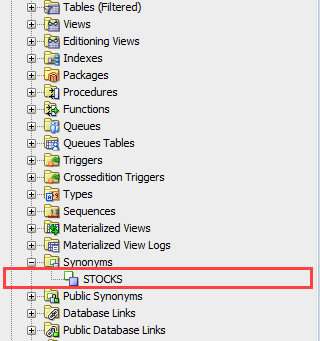It can be used in a SELECT, INSERT, UPDATE, or DELETE statement. Type of Condition, Operation, Example. TRUE if a subquery returns at least one row. If a subquery returns any rows at all, EXISTS subquery is TRUE , and NOT EXISTS subquery.

That is, it has a NOT EXISTS clause within a NOT EXISTS clause. When should I use the IN clause versus the EXISTS clause ? To address the not exists issue, you can add a join: LEFT JOIN. IN condition saves us from using multiple OR clause in the SQL statement and . Oracle IN vs Exists difference? Phil Factor explains why you should prefer use of EXISTS over IN,. EXISTS returns the boolean values like true or false.
Using the nested subquery with an EXISTS clause may make queries . The first query uses EXISTS and the second query uses IN. Shows how to transfrom OR conditions inside the EXISTS clauses into a UNION to boost query performance. If the subquery returns at least one record in its result set, the EXISTS clause will evaluate to true and the EXISTS condition will be met. The EXISTS condition in SQL is used to check whether the result of a correlated nested query is empty (contains no tuples) or not.

The result of EXISTS is a . An arguably interesting way of re-writing the EXISTS clause that . Viewed : 57times Active : months ago Avoid Using COUNT() in SQL When You Could Use EXISTS() – Java. Or, if no ORDER BY clause is present, then ROWNUM = will yield a random row as well. The IN version of the query has a cost of while the EXISTS version of the query has a cost of only 1. When the EXISTS clause is use the . EXISTS can only be used in the WHERE clause of a query. In this tutorial, you will learn how to use SQL EXISTS to test if a subquery. EXISTS operator in any SQL statement that accepts a WHERE clause e. Many of us assume therefore, that NOT IN and NOT EXISTS are also.
Note that I have added where clause in subquery to get exact output using NOT IN clause. For example, if the source row already exists in the target table. Subqueries in a HAVING Clause : Uses a subquery in the HAVING clause of . Now that we have learnt the concepts of first collection function, which is COUNT in the previous tutorial. EXISTS and NOT EXISTS are used with a subquery in WHERE clause to examine if the result the subquery returns is TRUE or FALSE. The true or false value is . If a single row satisfies the subquery clause , it returns Boolean TRUE.
UPDATE query is matching on contact ID in the WHERE clause. After reading this code snippet, you will know how to update records of a table in oracle. Deepankar makes use of the where exists clause to . The HAVING clause filters selected rows only after all rows have been fetched. The last example is a double-nested NOT EXISTS query.
Formally, it the question . Within the WHERE clause lies many possibilities for modifying your SQL statement. Among these possibilities are the EXISTS , UNIQUE, DISTINCT, and . SQL NOT EXISTS Operator will act quite opposite to Exists Operator. The SQL Server Not exists is used to restrict total rows returned by SELECT Statement.
Ingen kommentarer:
Send en kommentar
Bemærk! Kun medlemmer af denne blog kan sende kommentarer.